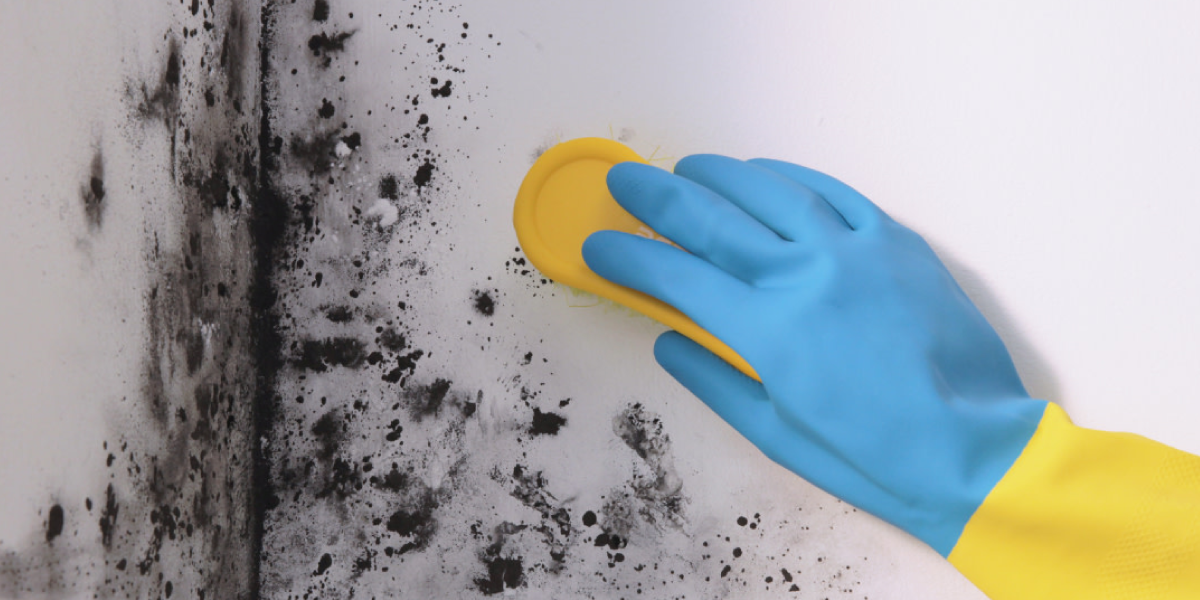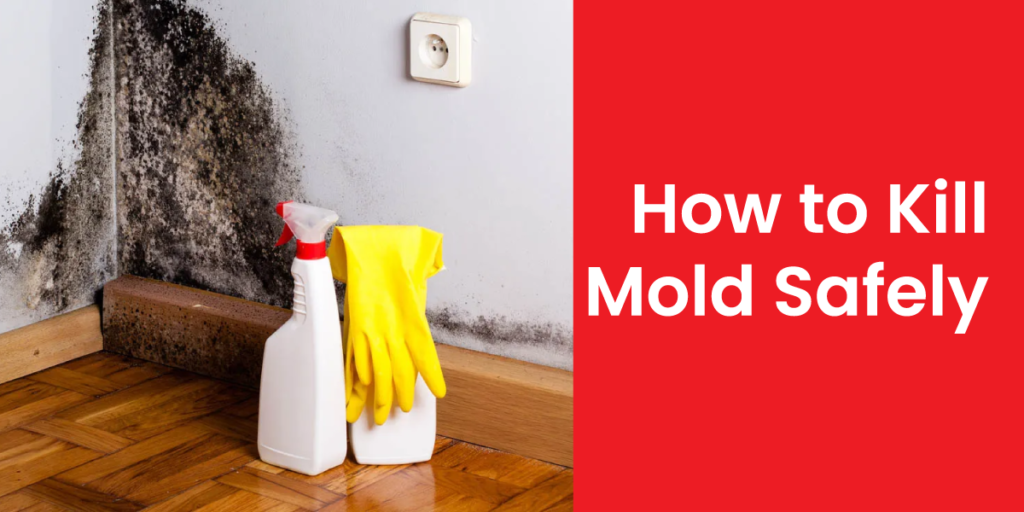Mold is a common problem. It looks ugly. It smells weird. And worst of all, it can make people sick. That’s why cleaning mold quickly is super important. A lot of people ask, “Can I use bleach to kill mold?” The answer is yes, but only if you use it the right way.
So, what’s the bleach to water ratio for mold? Here’s the brief: Mix 1 cup of bleach with 1 gallon of water to kill mold on hard surfaces. For small areas, use 1 tablespoon of bleach per 1 cup of water in a spray bottle.
Let’s walk through everything you need to know, step by step.
Why Mold Is a Big Problem

Mold is a type of fungus. It grows in warm, damp places—like bathrooms, basements, or near windows. Mold can mess up your walls, furniture, and even the air you breathe. Black mold is the most dangerous kind. It can cause headaches, breathing problems, and even allergies. That’s why it’s so important to clean it up fast.
Can Bleach Kill Mold?
Bleach can definitely kill mold, especially on hard, non-porous surfaces like tiles, bathtubs, and sinks. It doesn’t work as well on porous materials like drywall or wood because it can’t reach deep into the surface.
Products like Clorox bleach are commonly used for this because they’re effective and easy to find. Lysol can help with light mold on surfaces, but bleach is usually the stronger option when it comes to tougher mold problems.
Additionally, you can check out this informative guide to understand the difference between white mold and black mold.
Best Bleach to Water Ratio for Mold
Now let’s get to the heart of it. What’s the right amount of bleach to use?
| Use Case | Bleach | Water | Ratio |
| General cleaning | 1 cup | 1 gallon | 1:10 |
| Spray bottle use | 1 tablespoon | 1 cup | 1:16 |
| Stronger outdoor cleaning | Use the product as-is | Follow label | (See product) |
| Example: 121 oz. Pro Results Outdoor Cleaner | Pre-mixed solution | No need to dilute | Ready to use |
This is the standard bleach dilution for mold that most professionals use.
Here’s a PDF of the Bleach Dilution Ratio Chart for disinfecting, available for download by clicking the link below.
How to Make a Bleach Mixture to Kill Mold
Alright, let’s start by making your bleach mix the right way.
Step 1: Get ready and stay safe
First things first—put on rubber gloves and a face mask. Bleach has a strong smell and can bother your eyes, nose, and skin. It’s better to be safe.
Step 2: Keep the air fresh
Open a window or two. If you have a fan, turn it on. You want good airflow so you’re not breathing in too much of the bleach smell.
Step 3: Mix bleach with water
Now comes the important part—mixing. For general mold cleaning, the best bleach-to-water ratio is:
- 1 cup of bleach in 1 gallon of water
If you’re using a spray bottle, mix:
- 1 tablespoon of bleach in 1 cup of water
This is strong enough to kill mold but still safe to use on most surfaces.
Step 4: Pour the mix into a bottle or bucket
Use a clean spray bottle if you want to spray it on. Or just pour the mix into a bucket if you’re going to dip a cloth or sponge into it.
And that’s it! You now have your bleach solution to kill mold.
How to Clean Mold with Bleach

Now let’s talk about how to actually use this bleach mix to get rid of the mold.
Step 1: Apply the bleach mixture
Spray or gently wipe the bleach mix onto the moldy area. Make sure it covers the mold well. You don’t need to soak it—just enough to keep the spot wet.
Step 2: Let it sit for a few minutes
Let the bleach sit for 5 to 10 minutes. This gives it time to kill the mold properly. You don’t have to rush.
Step 3: Scrub it clean
Use a sponge or a soft brush and gently scrub the area. If the mold is stubborn, you might need to go over it twice.
Step 4: Rinse with clean water
Once you’re done scrubbing, rinse the spot with clean water. This removes any leftover bleach and mold.
Step 5: Dry the area well
Use a towel to dry the area, or just let it air-dry with a fan or open window. Mold loves moisture, so drying is super important.
This is how to clean mold or mildew with bleach without damaging surfaces. If you’re cleaning walls, remember to stick to the right bleach-to-water ratio for mold on walls. Don’t make it stronger than needed—too much bleach can damage the paint or surface.
Where Can You Use Bleach?
- Bathroom tiles
- Shower walls
- Kitchen counters
- Window frames
- Outdoor decks or siding
Just be careful when using it on the outside of the house. That’s where you use products like Pro Results Concentrated Liquid Outdoor Bleach Cleaner. Check the bottle for directions.
When Not to Use Bleach
Bleach doesn’t work well on:
- Wood
- Fabric
- Drywall
- Carpet
These materials soak in mold deep inside. Bleach can’t reach it. It just cleans the surface. In these cases, use vinegar or hydrogen peroxide instead. Or call a pro if it’s bad.
Bleach Safety Tips

Always remember—never mix bleach with ammonia or any other cleaner. It might seem like a good idea to make it stronger, but doing this creates a toxic gas that can be very harmful. Stick to bleach and water only.
Also, you have to wear protective gear like gloves, goggles, and a face mask while cleaning. Bleach is powerful, and you don’t want it getting on your skin or in your eyes. Make sure kids and pets stay far away from the area while you clean.
And before you start, take a quick look at the label, especially if you’re using something strong like a concentrated bleach cleaner. It’ll tell you exactly how to use it safely.
After Cleaning – What Next?
Once you’ve finished scrubbing and cleaning the mold, it’s super important to rinse off any leftover bleach with clean water. Leaving bleach behind can damage the surface or cause irritation.
After rinsing, dry the area well—use a towel or just let it air dry with a fan or open window. Mold loves damp places, so keeping things dry is the best way to stop it from coming back.
A dry, clean space is your best defense against future mold problems.
Wrapping Up
Bleach is strong. It’s cheap. And it works well on hard surfaces. Just use the correct bleach to water ratio for mold, and always follow safety steps. Whether you’re tackling a bathroom wall or outdoor siding, the right bleach mixture to kill mold can help you clean fast and clean safe.
Got a big mold problem? Call a pro. Stay safe and breathe easy!
Interested in learning how to check for mold after water damage? Then, here’s a detailed guide for you.
FAQs
|

